Usually the Marines of the Royal Netherlands Marine Corps (RNLMC) use the hot and sticky primary jungles of Brunei, Belize, Guyana and Ghana as tropical training grounds as part of their ‘Extreme Weather and Terrain Training’. From early 2006 on the South American country Surinam – located between Guyana and French Guiana – can be added to that list. At that time the Netherlands and the government of Surinam reached an agreement on future jungle training. The Surinam jungle (with among others huge trees and thick canopy) is namely ideal for Jungle Warfare training purposes. In return, the Netherlands will provide Surinam with defence materiel such as trucks.
Jungle Warfare Course: And although the majority of the ‘Jungle Warfare Course’ (JWC) trainees are Marines from the RNLMC, a small number of Army Commandos (green berets) and Air-Assault soldiers (red berets), go through the same course each year.
Why do Dutch Marines and soldiers from these specific Dutch Army units, need to fight in the jungle? Well they are the Netherlands ‘go anywhere forces’ and a key component of the government’s Rapid Expeditionary Reaction Force. As such, they are required to be trained to work in different terrains and environments that can be as hostile as the enemy, ranging from the cold, mountainous conditions in Northern Europe, to the hot arid regions of the Middle East and Africa and to the dense tropical jungles of the Far East.
Challenging: This Dutch-Surinam cooperation is evidence of the good military relations between the two nations. Following this agreement approximately 60 Dutch Marines, all from 31 Infantry-company, based at Navy-base Parera on the Island of Curaçao (Dutch Antilles), found themselves from 12 March onwards for twenty-eight days in Surinam. There they complete an arduous ‘Jungle Warfare Course’ (JWC) using the techniques of the indigenous peoples of the Amazon rainforest of Suriname. This JWC includes tactics such as basic survival, health and hygiene, navigation, patrolling, clearing villages, looking for booby traps, and how to get within a couple of meters of the enemy without being seen. The jungle is an extremely challenging environment to survive in let alone fight in, so it is critical that training is thorough and realistic.
Suck it up: For Marine first class Maarten Bruinenberg it is his first time ever in the jungle. “Trudging forward with wet, aching feet, slippery mud threatens to pull you down at every step,” says Bruinenberg. “Vegetation reaches out, and bearded thorns grabs your arms and legs, no matter how careful you are. And the bees, mosquitoes, big angry ants and bugs. Oh, man the bugs, they bite and bite and bite. Don’t even mention the snakes. But the worst thing of all, there’s nothing you can do about it except suck it up, and keep putting one foot in front of another.”
To most people this will sounds like hell on earth, but for the handful of Jungle Warfare Instructors (JWIs) both from the Surinam National Army and the RNLMC at the central base camp named ‘Patrol Harbour’ in the Saramacca district of Surinam, this is home, and they love every minute of it. “It is tough living out here, really isolated, but I get to do things I would not get to do elsewhere,” said chief JWI Marine sergeant-major Bart Cobussen. “This huge rugged jungle terrain, consisting of unique and demanding dense single-canopy vegetation and often harsh tropical weather, will prepare Dutch Marines and soldiers for combat missions and operations around the world. Outside Camp ‘Patrol Harbour’ few creature comforts, it is like returning to the Stone Age. No traffic, no cell phones, not even an alarm clock.
The twenty-eight day jungle skills course teaches the specific skills required to the personnel to survive in the jungle. Instruction is conducted in an expeditionary environment and emphasizes small unit skills. It is designed to increase a units ability to attack, defend, patrol, re-supply and survive in a jungle environment. “They really learn a lot while they are here,” said Cobussen. “Patrolling, land navigation, first aid and how to find food in the jungle, all the things needed for survival. OK. So you have to get from point A to point B on the map. Five kilometres, no problem. Sound easy? Well, guess again. Remember the vegetation and the mud? Throw in the fact that most of the path is going up or down steep grades that appear out of nowhere in the thick brush, and you have got ‘Jungle Land Navigation’. For most trainees, this part is the hardest. There is just so many ways to get turned around out there. Especially the night land navigation can get pretty hairy. There is a lot of opportunities to get lost or hurt, so we are always ready to do search and rescue if something goes wrong. A lot of bad things can happen in the jungle.
Pass on: “The jungle was a truly humbling experience,” added Bruinenberg. “My favourite part of the course was the Jungle Shooting exercise. Platoons were broken into separate patrol squads and participate in a variety of ambush situations. Everyone left with a better understanding of what it is like have a fire-fight in a jungle environment.” As the end of the JWC approached, trainees faced the six-days squad endurance course, which combines the majority of the skills learned throughout the twenty-eight day course. It also includes several kilometres of winding paths through the harsh jungle terrain, hasty rappelling, mud and water crossings, rope bridges and a ‘slide for life’. The final kilometres was made more difficult, as participants constructed a field litter out of battle dress uniform tops and tree branches to carry a person in their squad to the end of the course. This culmination of the skills pushes all the students to their limits and stresses the concept of teamwork. No one gets left behind. “It was very tiring and a lot of hard work, but I really enjoyed it,” said Bruinenberg. “It was exciting to get a chance at some difficult jungle training to broaden my skills in the field.
Along with the hot and sticky climate, there were other differences that intensified the training. This training is giving us a good feel for what it is like in a jungle. Aside from rivers and hills, you have got a lot of vegetation. It makes land navigation difficult. These challenges make the training more exhausting. It also forces us to adapt to a more difficult environment, which will benefit us in the future. We are not used to the differences here, so the training gets tiring fast and our pace count gets messed up. But this will make us better when we are back in an environment that is flatter and a little less thick. We will take with us good force-on-force skills because the jungle forced us to be more aware of things.” Cobussen said the Marines did well adapting to their surroundings through the training. “They now have a basic knowledge of how to live in different terrains because they have trained in many locations,” Cobussen said. “And even when we have gone back to their barracks in the Dutch Antilles or the Netherlands, these Marines can continue to pass on their knowledge to new joins as they come.”
Be ready: Bruinenberg added that the training was nothing more than a link in a chain of training the rifle-company participates in as they push to prepare for anything. “We must be experts in all environments and terrains,” Bruinenberg said. “If you just specialize in one area, it is not guaranteed you will end up going there to fight. You have to be ready for combat in any location.” Cobussen said jungle terrain was just another check on the units list of places to train. They have already participated in desert and cold weather training. “This gives them that training in every clime and place. However in accordance with the Surinam policy in favour of the preservation of the forest, the practical section of the course will limit the usage of forest material to an absolute minimum. Edible and useful materials and wildlife and the way to acquire them are indicated, rather than actually consumed,” Cobussen concluded.




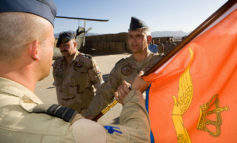
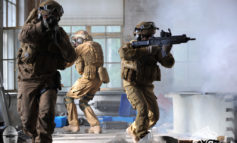
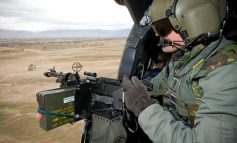

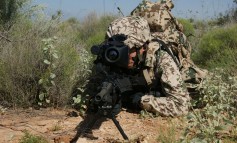
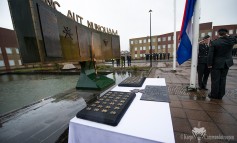
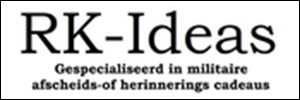


Leave a Reply